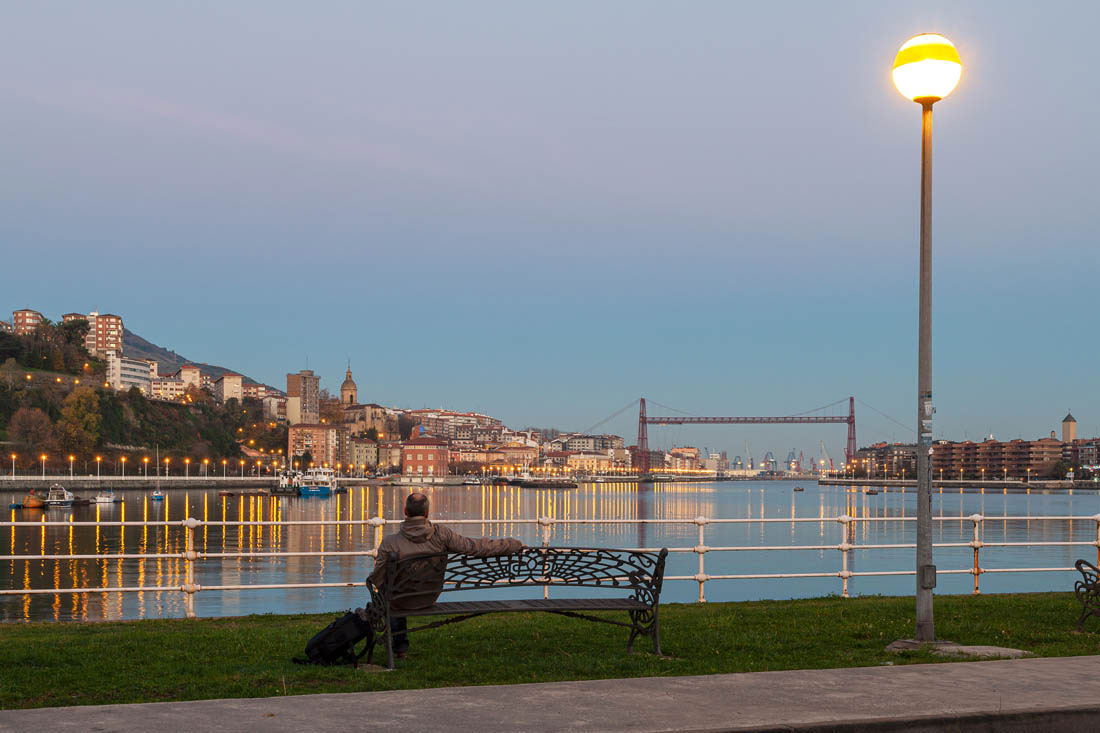The River Nervión has played an instrumental role in the history of Bizkaia and the Basque Country.
Starting from the river source in Álava, the Nervión has been a driving force behind the emergence of towns and villages on its banks and surrounding areas.
At the estuary of the river, known as La Ría, the city of Bilbao has been a prominent feature since the 1300s. The old shipyards on the river estuary brought much wealth to the area and has been key in the transformation of the city over the years.
In this article, starting at La Ria and working our way to the source, we’ll run through the top things to see on the River Nervión.
🏙️ One of the best ways to learn more about Bilbao is to take one of the FREE Walking Tours
Things to see on the River Nervión
Starting in Getxo, where the River Nervión meets the Cantabrian Sea, we’ll work our way through some of the most popular monuments and things to see along the river.
1. Puente de Vizcaya (Vizcaya Bridge)
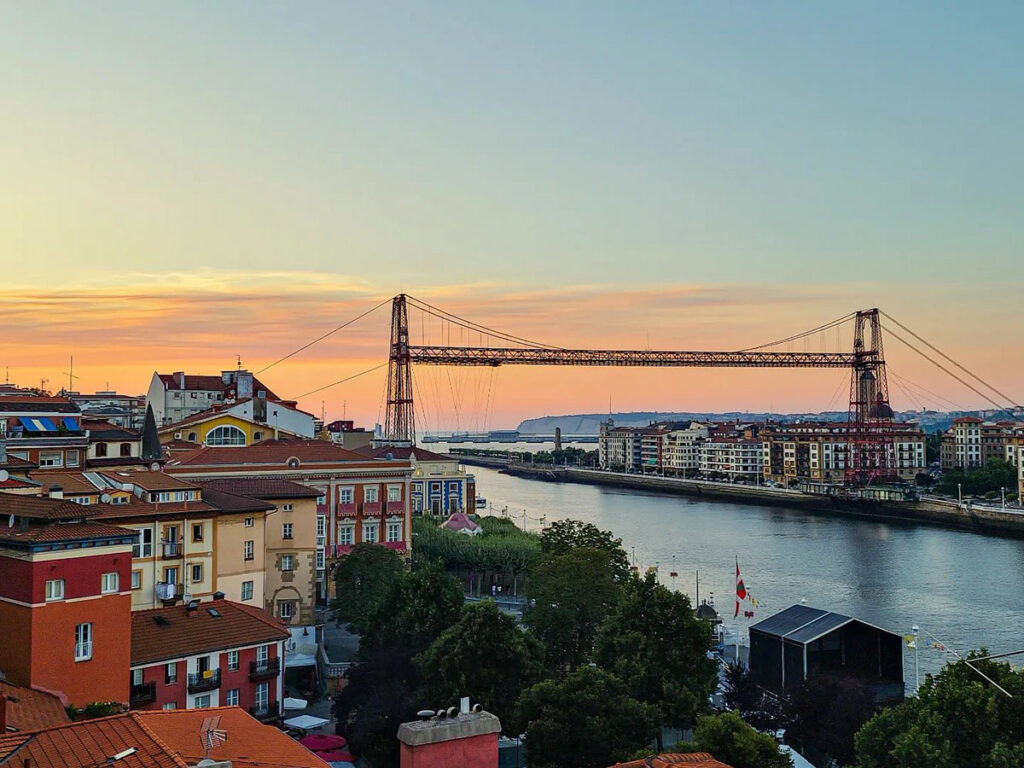
The Vizcaya Bridge has been standing in the mouth of the River Nervión estuary since 1893.
An impressively designed structure, it stands at 45 metre high, spanning 160 metres across the water. But it’s the way you travel across the river that makes this bridge so special.
Instead of walking across the bridge, people and traffic are carried across the river in a suspended gondola, in order to avoid the passing ships below
Whilst these days, bridges like this exist elsewhere in the world, the Vizcaya Bridge was the first of its kind. As the world’s first transporter bridge, it’s a magnificent piece of innovative design and engineering by Basque architect, Alberto de Palacio.
Perhaps most impressive, is that it has been in service since its inauguration!
In 2006 it was declared a UNESCO World Heritage site for its technological advancement and pioneering structure.
2. The Guggenheim Museum
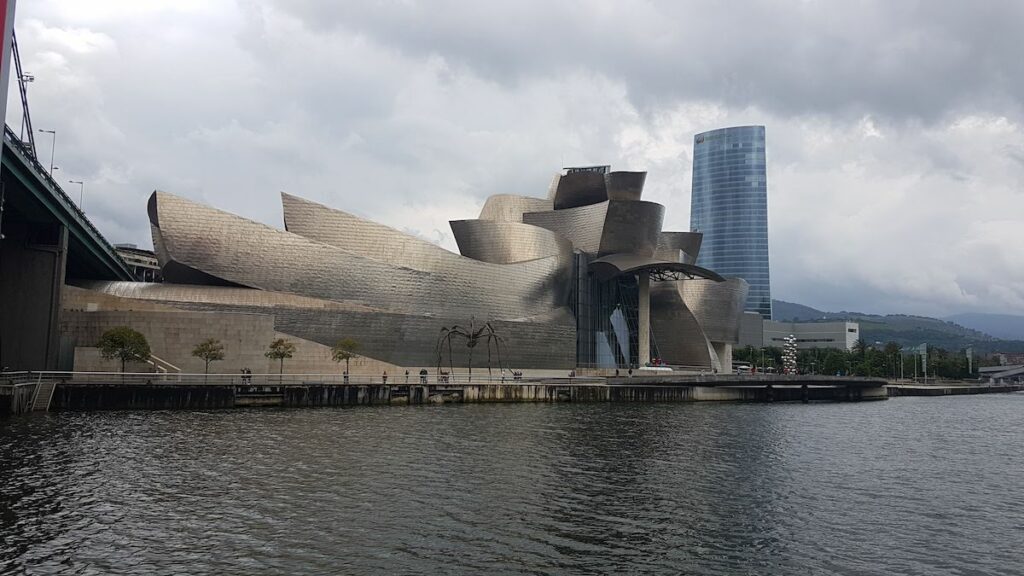
If the old shipyards along the River Nervión played an important role in Bilbao’s past, then it’s fair to say that the Guggenheim Museum has played an equally important role in shaping its present.
It’s located on what had started to become a dark and abandoned industrial corner of the city and has led to rejuvenation not just in that area, but the city as a whole.
Opening in 1997, it’s visited by over a million people each year and is one of the most renowned contemporary art museums in the world.
The building itself has had a large part that! Even if contemporary art isn’t quite your cup of tea, visiting the museum from the outside is a must do on a trip to Bilbao.
Mind you, it’d be difficult to miss given it’s a large boat-shaped structure made from titanium, limestone, and glass. Over the years it has become the most recogniseable icon of Bilbao.
3. The Zubizuri Bridge
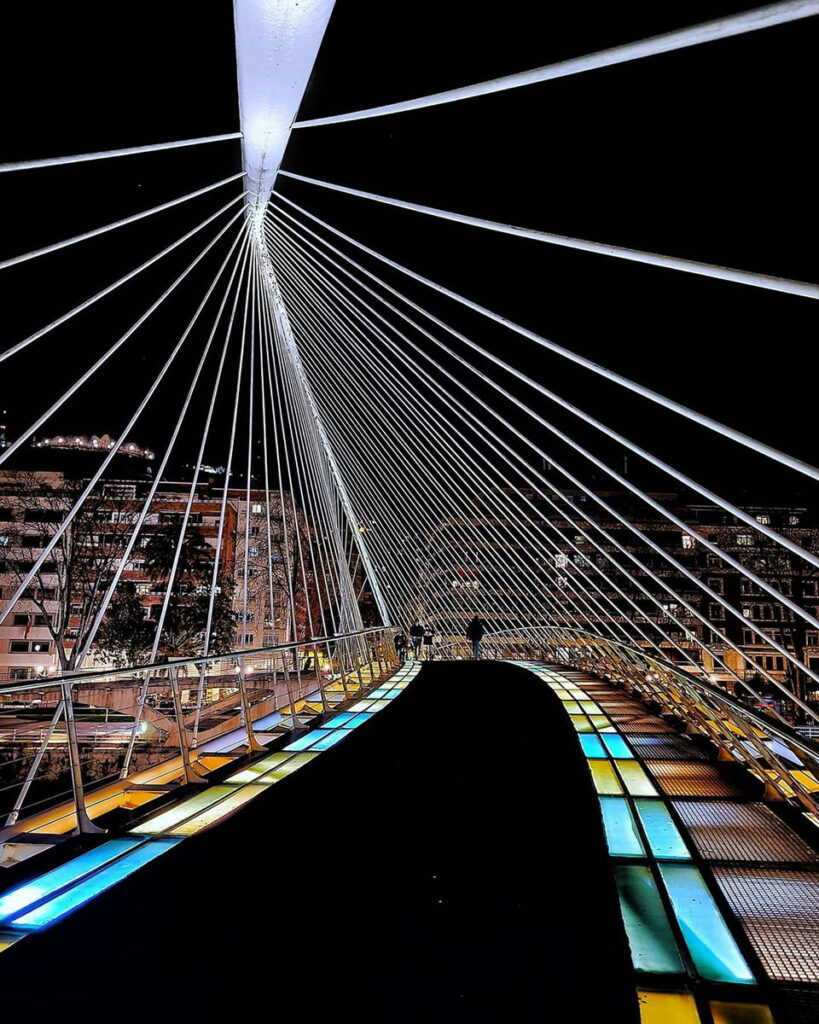
The Zubizuri Bridge (which means “white bridge” in Basque) is perhaps one of the most controversial constructions in Bilbao.
Designed by the famous Valencian architect Santiago Calatrava, the bridge connects the Ensanche district with Calle Campo de Volantín. It’s also known as the “Calatrava Bridge” or “Campo de Volantín Bridge” for that reason.
But here’s where the controversy comes in.
Calatrava was chosen to help bring something unique to Bilbao in order to help the decline of the city’s maritime industry. And he certainly did that with the bridge that has a glass deck, making it possible to see the structure below.
However, it wasn’t very practical. Pedestrians kept slipping on the bridge, and after hundreds of complaints, the council eventually covered the whole thing with a non-slip surface.
4. Arenal Gardens and Casco Viejo
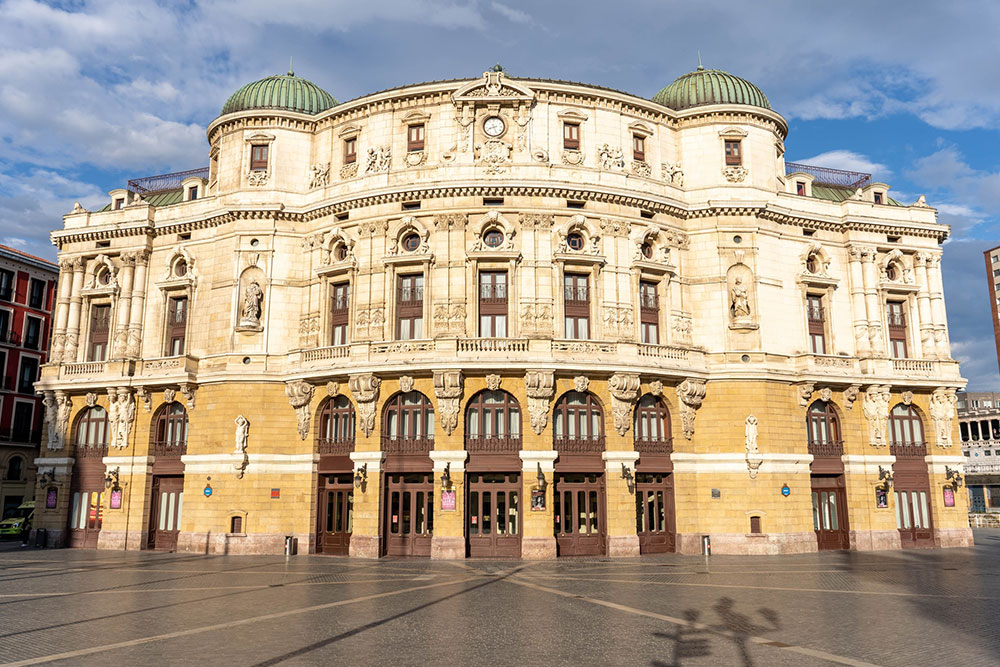
Standing on the banks of the River Nervión, the Arenal Gardens are the gateway to the Historical Quarter of Bilbao and connect the Old with New Town.
It’s a small area of peace and tranquillity, where the trees provide a bit of shade and a break from the city. Paseo del Arenal is also one of the best routes to walk to take in all the beauty of the river.
In the garden itself, there are two notable buildings. The Arriaga Theatre, sitting on the river banks, is a beautiful building with a Neo-Baroque façade which was modelled on the Paris Opera House.
Whilst on the other side of the gardens, the Church of San Nicolás. The church has a striking Baroque façade with two towers that have overlooked the gardens here since 1756.
Once you’ve explored the Arenal Gardens, move into the Seven Streets of the Casco Viejo.
5. La Ribera Market
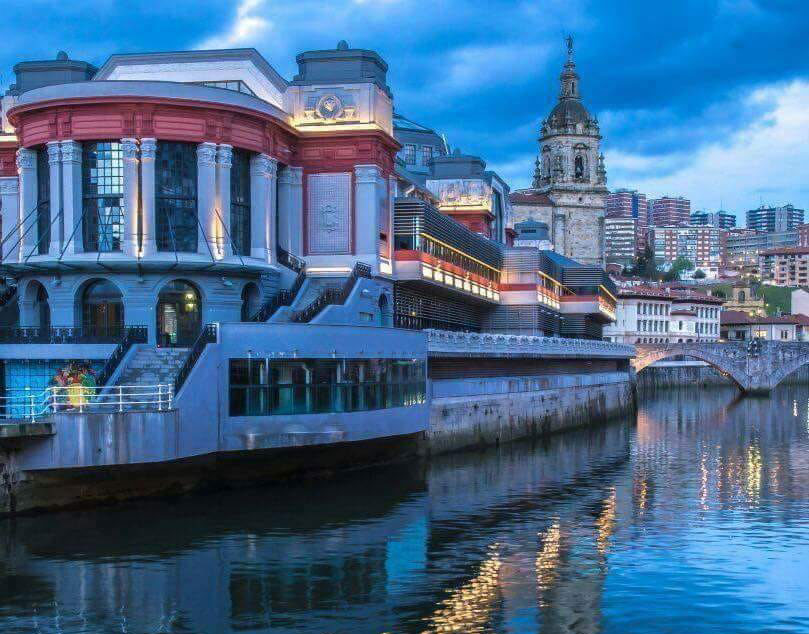
Further up is probably one of the most iconic buildings along the River Nervión, La Ribera Market. Shaped almost like a ship docked at port, it’s certainly one that grabs attention and gives a nod back to the river’s past.
Whilst the building itself is enough to make the trip here, what’s inside is equally impressive!
The building is home to the Mercado de la Ribera. It was recognised as the largest covered market in Europe, and also entered the Guinness Book of Records for being the most comprehensive food market in the world!
Local merchants from the nearby towns and villages have traded here everyday since 1929. It’s one of the best places to try some of the local cuisine whilst in the Basque Country.
6. Salto del Nervión (Nervión Waterfall)
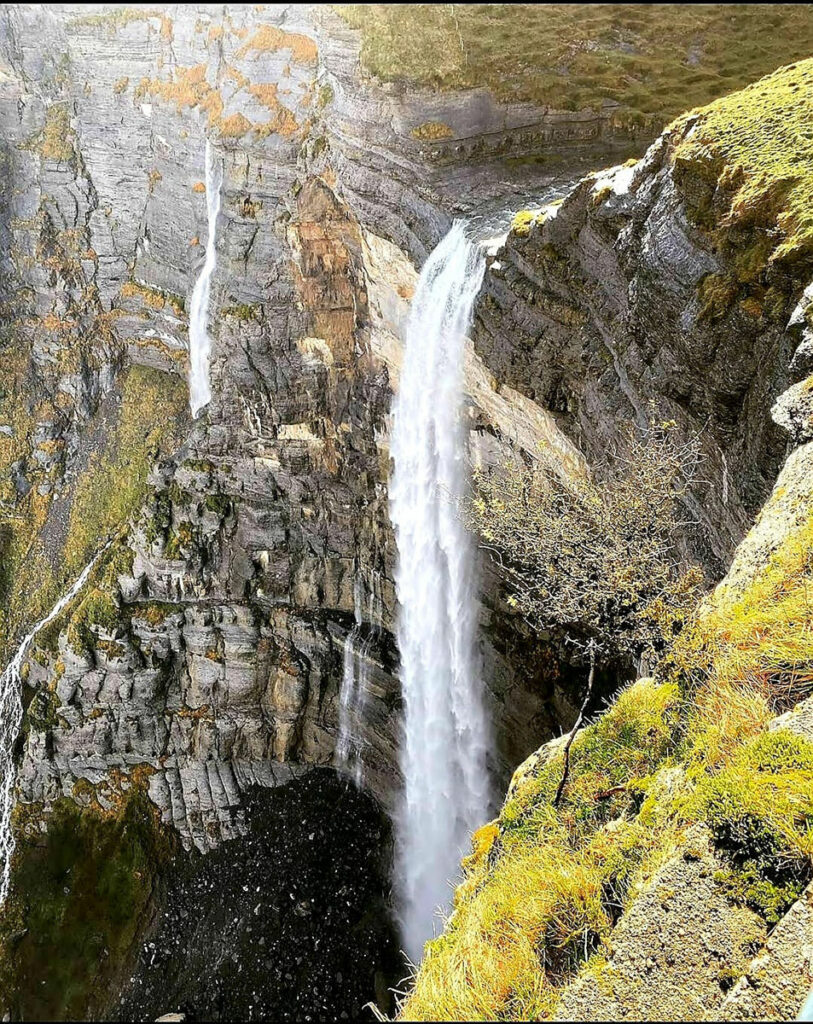
Our final recommended stop on the River Nervión is a little further out of the centre of the city. In fact it’s about a 40 minute drive closer to the source of the river.
But trust us, it’ll be worth the journey! That’s because at the end of it, you’ll get to see the highest waterfall in the whole of Spain.
Standing at 222 metres high, the Nervión Waterfall is an extraordinary natural feature, surrounded by mountains and forests. The only downside is that water doesn’t flow here all year round, and it’s usually dried out in the warmer summer months.
But nevertheless, it’s an impressive spot, with plenty of different viewpoints to take in the different angles of the waterfalls. It’s not uncommon to see eagles soaring above the waterfall too!
If that’s not enough to convince you to make the trip, then a hike around the other waterfalls nearby (such as the 100m high Gujuli Cascade) may be.
FAQs about the River Nervión
Below we’ve answered some of the most common questions about the River Nervión.
However, if you have any questions that haven’t been answered, drop us a comment below and we’ll get back to you!
The River Nervión is a 72 km long river that runs through the city of Bilbao, in the Basque Country. The source of the river is Álava province, close to Burgos province borders.
The Nervión River has a maximum depth of 30 metres (source).
Bilbao is located on the lowermost course of the River Nervión. The river estuary is commonly known as La Ría or the Estuary of Bilbao.
